A New Ear's Resolution
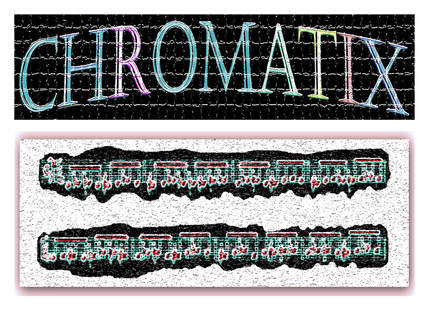
It provides a window into the myriad combinations of lines and sequences that can be constructed with the close intervals of a minor and Major 2nd, as well as min. & Maj 3rds.
As a result, "Chromatix" is first and foremost, a collection of 50 technical exercises, designed to get into the "cracks and crevices" of your fingering technique - regardless of your chosen instrument.
Chromaticism (from the Greek word chrōmatikos - meaning "multicolored"), has been a part of the improviser's palette since Louis Armstrong introduced it in his early recorded solos from the 1920's.
Even with its added chromatic "dissonance", Miles' music - like Ornette Coleman's - could still, for the most part, be considered "tonal" (rooted in a key center).
This is in contrast to the "atonal" chromaticism of pianist Cecil Taylor, from the same period, as well as the later music of John Coltrane, among others, in what became known at the time as the "Avant Garde" or "Free Jazz" movement.
Being based on the equal gravity of each of the 12 tones of the chromatic scale, this aspect of chromaticism has also been referred to as "Twelve-Tone" or "Serial" music, pioneered in the early 20th Century by composers Arnold Schoenberg and Alban Berg, being the most well known.
It's usage in improvised music is currently best represented by New York guitarist Bruce Arnold and saxophonist John O'Gallagher.
Chromaticism in Jazz is also not new in book form, either. Here's a short list of some of the better known, accessible publications on the subject, to date:
- George Russell "The Lydian Chromatic Concept"
- Dave Liebman "A Chromatic Approach to Jazz Harmony and Melody"
- Jerry Bergonzi "Thesaurus of Intervallic Melodies"
- George Garzone "Triadic Chromatic Approach"
- John O'Gallagher "Twelve-Tone Improvisation"
- Bruce Arnold (Many Books from Muse-Eek Publishing)
Each of the above publications approach the Chromatic Universe from a unique perspective and travels its own unique route, occasionally crossing paths and concepts.
It's definitely a big universe out there!
"Chromatix" could be viewed as a worthy primer to each and any of the above listed volumes, as its fifty technically focused exercises and sequences serve as a launching pad for further exploration of any of the above concepts.
Below are just a few ideas of how some of this material might be used in an improvisational context,. combining bits from various sequences over a ii-V7 in Bb. Because of the underlying harmony and strong sense of resolution to Bb, these are very "tonal" examples of chromatic usage.
The first two measures of the line below consist of material from Sequences #16 and #13 (shown above), respectively; modified with rests, triplets and slight rhythmic shifting, over a common ii-V7.
Material from the ii-V7 example below is from Sequence #1.
The first 2 bars are from Sequence #41.
Sequence #43 anyone?
They are not presented in any particular order or degree of difficulty.
Most of the sequences cover the full, normal range of the saxophone, but can be adapted to suit the range of any instrument - or whatever range is comfortable. Many of the exercises have one or two measure repeats, in order to focus on a particular tonal area.






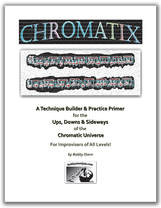
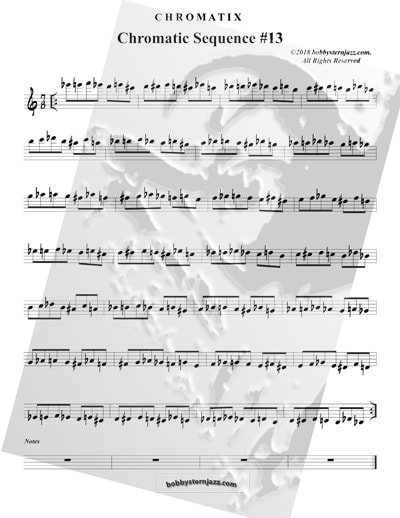
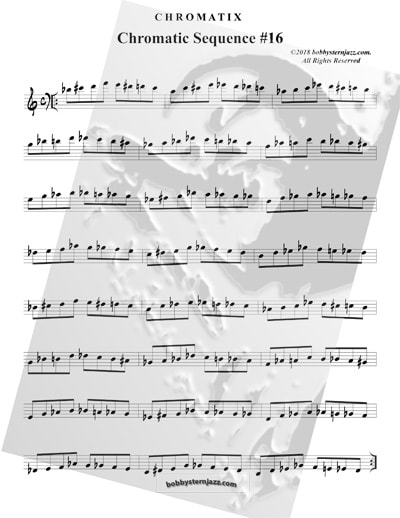
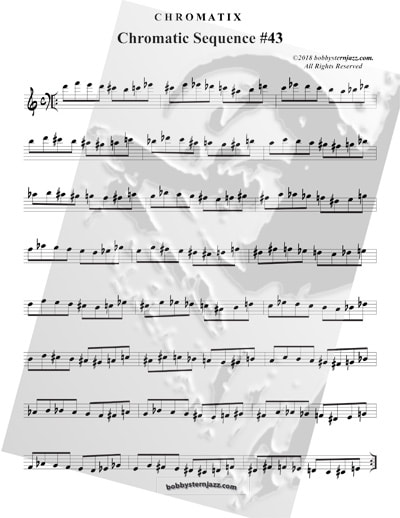

 RSS Feed
RSS Feed









